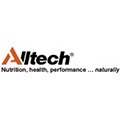 This week, keynote speaker Aidan Connolly, vice president of Alltech and associate professor of marketing at UCD Michael Smurfit Graduate Business School, Ireland, addressed more than 1,200 Chinese feed industry, academic and political leaders at the 9th China Animal Husbandry and Feed Technology Economic Forum, held in Beijing.
This week, keynote speaker Aidan Connolly, vice president of Alltech and associate professor of marketing at UCD Michael Smurfit Graduate Business School, Ireland, addressed more than 1,200 Chinese feed industry, academic and political leaders at the 9th China Animal Husbandry and Feed Technology Economic Forum, held in Beijing.
During his presentation, Connolly summarised Alltech’s vision of the future of the Chinese feed industry in four points:

1. Consolidation – Between 1990 and 2012 the number of feed mills in both Europe and the US dropped by a third, while their production capacity increased over 80 percent (from an average of 24,000 to 50,000 tons per year). A similar trend is forecast to take place in China in the next five to ten years. Already, the number of feed mills has dropped from 13,000 to just over 10,000 and is predicted to drop even further as overall feed tonnage rises.
2. Automation –The feed mills of the future will be fully automated systems. Three people can run a 100,000 ton capacity feed mill in the west, where the same mill in China will have 30-40 production workers. Automation can not only reduce cost, but also increase manufacturing accuracy and play a part in biosecurity.
3. Consumer Demands – Today’s Chinese consumers are increasingly conscious about food quality and food safety. Safe feed is essential to produce safe food, thus feed producers must use safe and natural technologies in their production to ensure full traceability, consistent quality and biosecurity. At the same time, feed producers will need to significantly increase their feed efficiency.
4. Precision Nutrition – In the future, feed producers will be able to access information from technologies such as nutrigenomics, NIR, temperature probes and automatic weighing scales. These and other real time information systems will identify, on a minute-by-minute basis, the effect that nutrition is having at a genetic level, in relation to animal growth, diseases, food safety and food quality. This will lead to ‘precision nutrition’ or the development of systems that deliver precise nutrients when animals require them.
“By using advanced technologies such as nutrigenomics, China can rapidly transform itself to become the world’s most significant and most advanced player of the global feed industry,” explained Connolly. “Four out of the world’s largest feed companies are Chinese. With an expected output of 190 million tons this year, China is the world’s largest feed producer. In order to become highly competitive in global markets as well as to live up to the growing expectations of Chinese consumers, it will be critical for Chinese producers to maximize the use of new technologies, including novel materials such as algae or enzymes to assist digestion. Technologies targeting enhanced feed efficiency should be embraced, including those developed using nutrigenomics,” he concluded.
Dr. Cai Huiyi, president of the China Feed Economy Professional Committee, concluded that “our aim with the conference was to learn and we learned a lot from the history of the feed industry in the US and Europe which is essential for China to accelerate the development of its own feed successes.”
December 11, 2012 - Alltech


